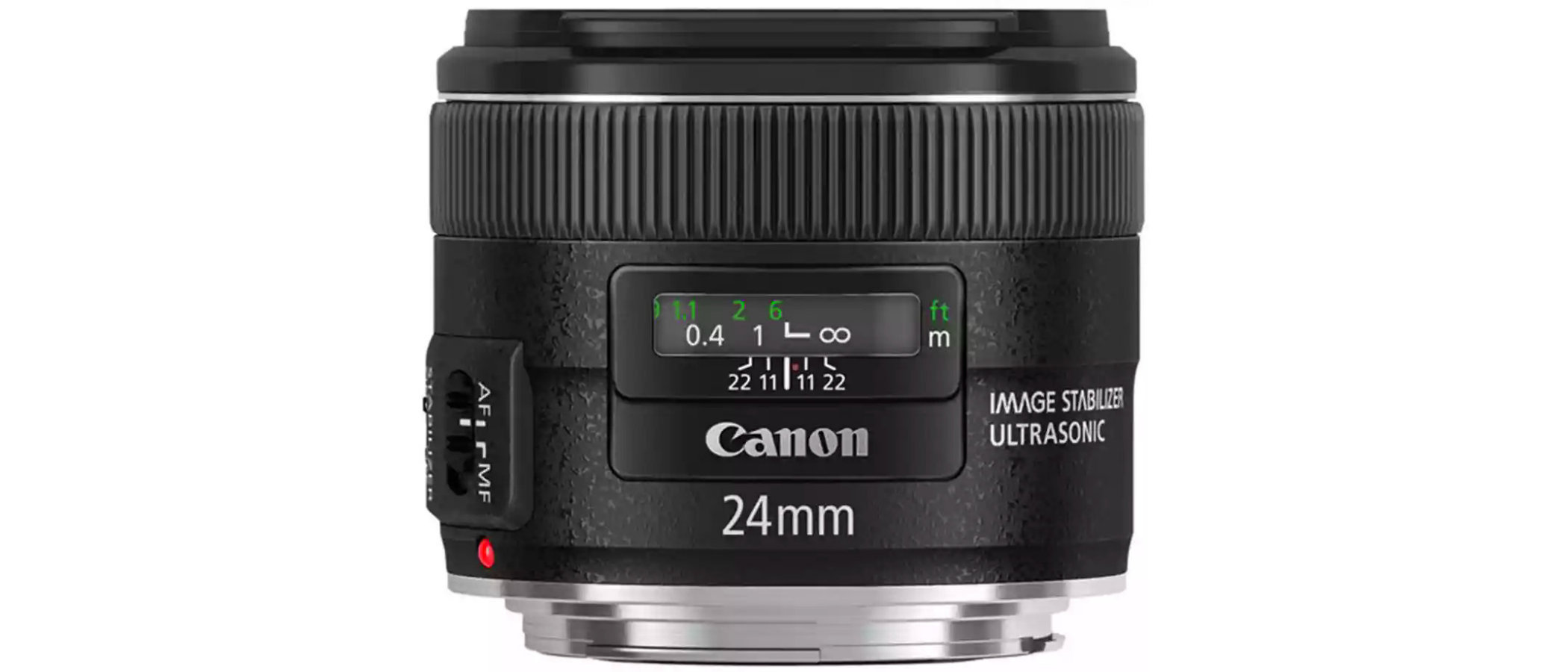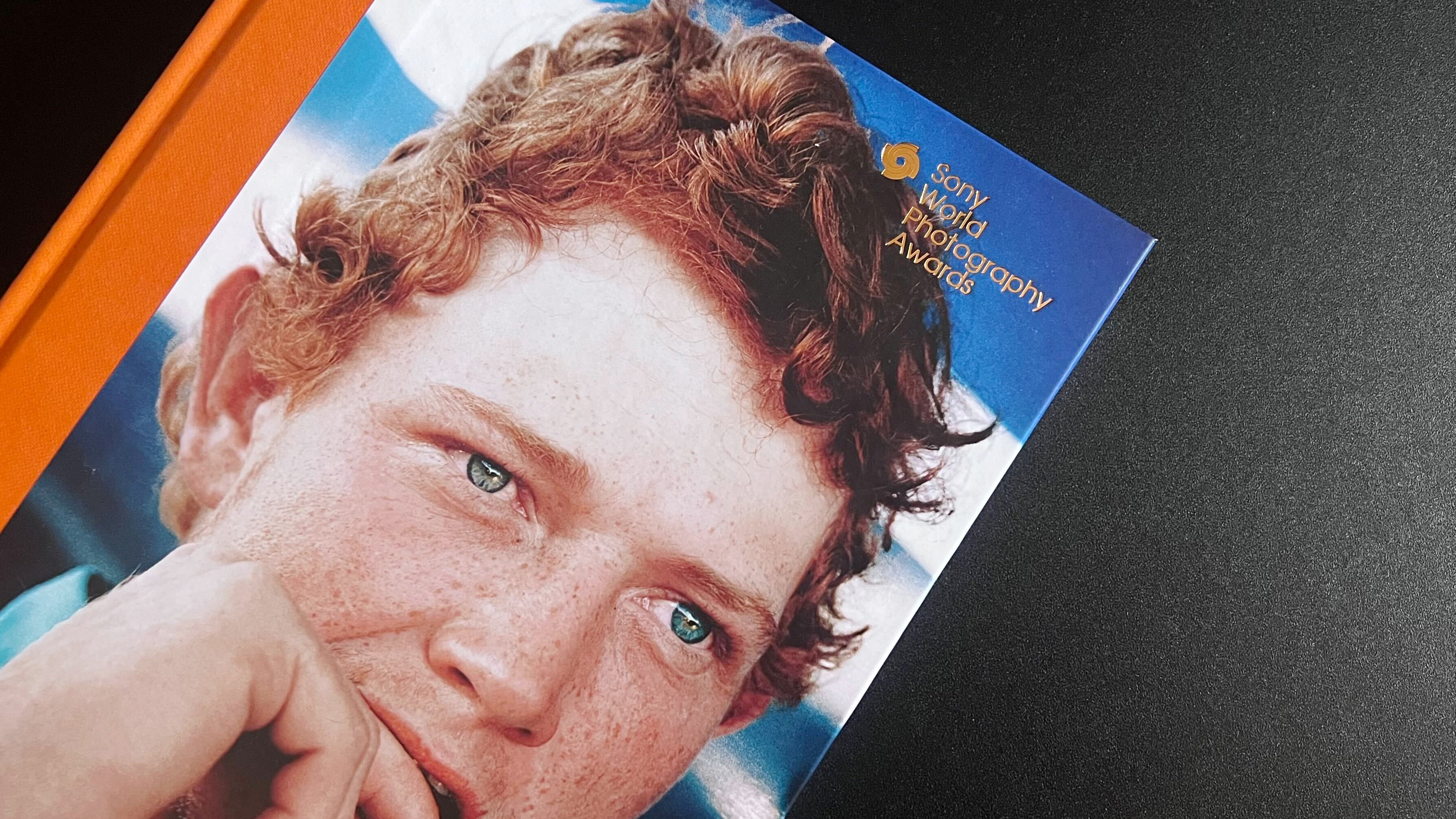Digital Camera World Verdict
Designed primarily for Canon’s full-frame DSLRs, this fairly compact and lightweight prime is great for walkabout shooting, especially as it features optical image stabilization. It’s arguably even better suited to APS-C format DSLR’s on which it has an ‘effective’ focal length of 38.4mm, ideal for street photography. The only catch is that Canon recently discontinued its production, and remaining stock is thin on the ground. Even so, it makes a super second-hand buy.
Pros
- +
Compact and lightweight
- +
Optical image stabilization
- +
Performance and image quality
Cons
- -
No ‘faster’ than a 24-70mm f/2.8
- -
Hood sold separately
- -
New stock hard to find
Why you can trust Digital Camera World
The full-frame compatible Canon EF 24mm f/2.8 IS USM has the same focal length and aperture rating as Canon’s EF-S 24mm f/2.8 STM pancake lens, the latter being designed for APS-C format DSLRs. The full-frame ‘EF’ lens is still reasonably compact and easily manageable at 68x56mm and 280g. It has a more conventional build, based on 11 optical elements rather than just six used in the pancake package.
Specifications
Mount: Canon EF
Full-frame: Yes
Autofocus: Yes
Image stabilisation: Yes
Lens construction: 11 elements in 9 groups
Angle of view: 84 degrees
Diaphragm blades: 7
Minimum aperture: f/22
Minimum focusing distance: 0.2m
Maximum magnification ratio: 0.23x
Filter size: 58mm
Dimensions: 68x56mm
Weight: 280g
Key features
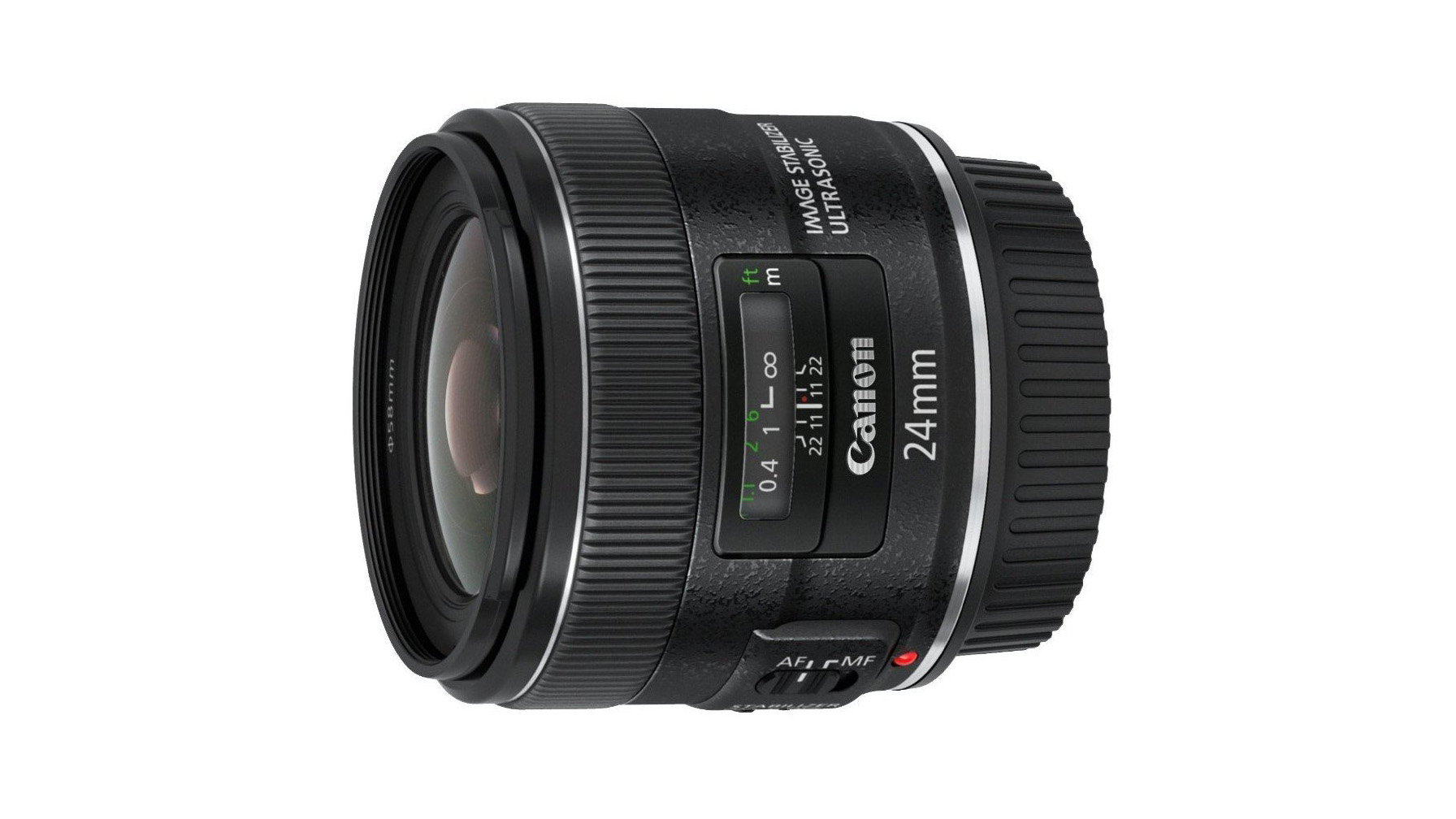
The optical design includes one aspherical element to enhance performance and reduce the physical size, along with Super Spectra coating to combat ghosting and flare. The aperture remains fairly well-rounded when stopping down a little, based on a 7-blade diaphragm. 4-stop optical image stabilization is a key feature for handheld shooting under very low lighting, making the lens a good option for indoor or twilight photography.
Unlike many of Canon’s latest lenses, this one has a ring-type ultrasonic autofocus system, rather than using a stepping motor. Typical of the breed, it has a focus distance scale, which is lacking in STM lenses, along with depth of field markings for f/11 and f/22. With a mechanically rather than electronically linked focus ring, manual focusing is available at all times, without first needing to activate the camera’s focus/metering system. However, also typical of ultrasonic autofocus lenses, the rotational travel of the focus ring is quite small and less than ideal for manual focusing.
Performance
On a full-frame camera, this lens delivers good sharpness even in the extreme corners, although color fringing can be slightly noticeable if uncorrected. Used as a street lens on an APS-C format body, you get a more suitable viewing angle and the crop factor cuts off the corners of the frame, reducing color fringing, distortion and the drop in edge-sharpness.
Lab results
We run a range of lab tests under controlled conditions, using the Imatest Master testing suite. Photos of test charts are taken across the range of apertures and zooms (where available), then analyzed for sharpness, distortion and chromatic aberrations.
We use Imatest SFR (spatial frequency response) charts and analysis software to plot lens resolution at the center of the image frame, corners and mid-point distances, across the range of aperture settings and, with zoom lenses, at four different focal lengths. The tests also measure distortion and color fringing (chromatic aberration).
Sharpness:
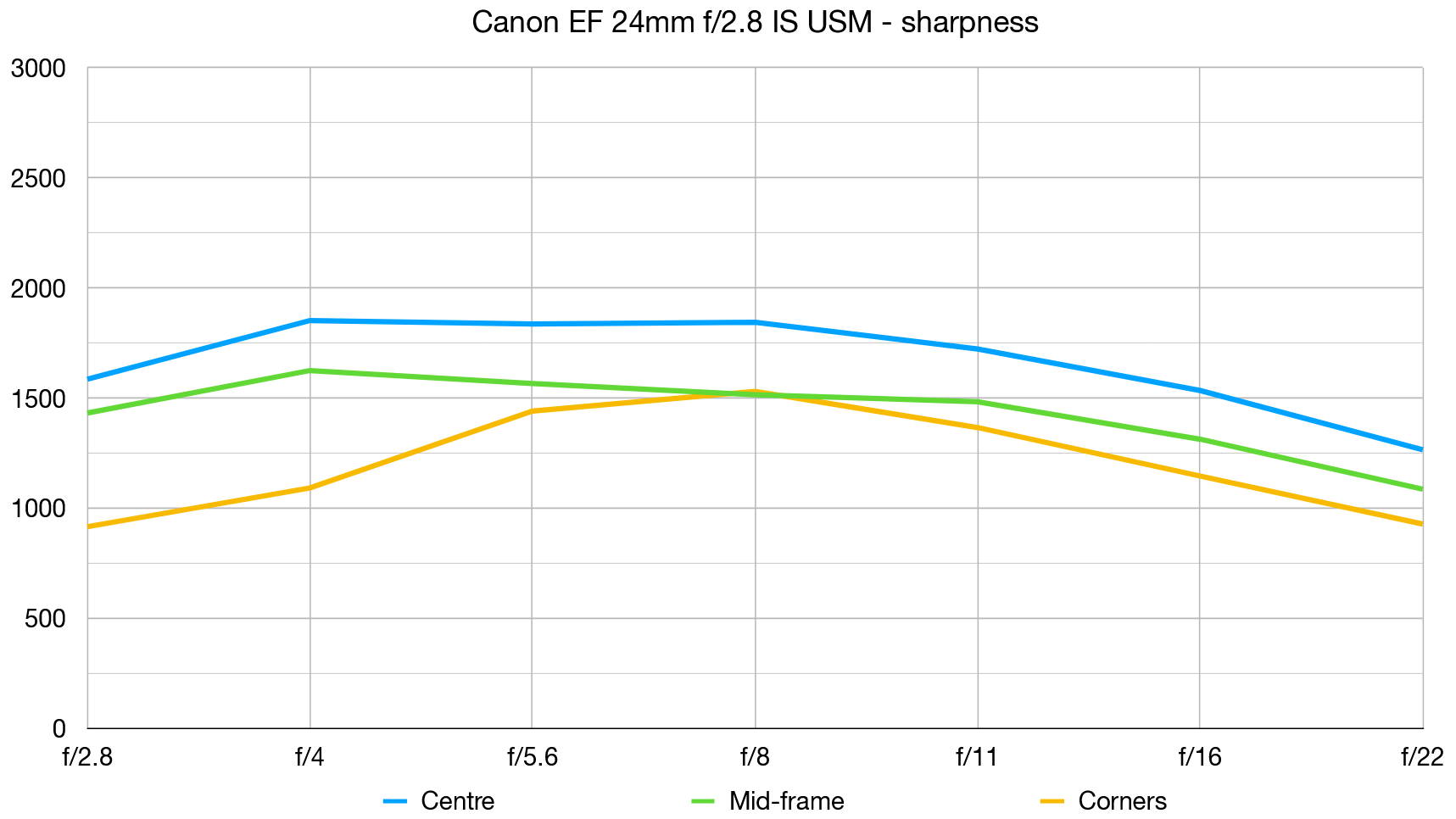
Centre-sharpness is pretty good wide-open at f/2.8 and excellent in the f/4 to f/11 range. For really good edge-sharpness, it’s best to stop down to f/5.6 to f/11.
Fringing:
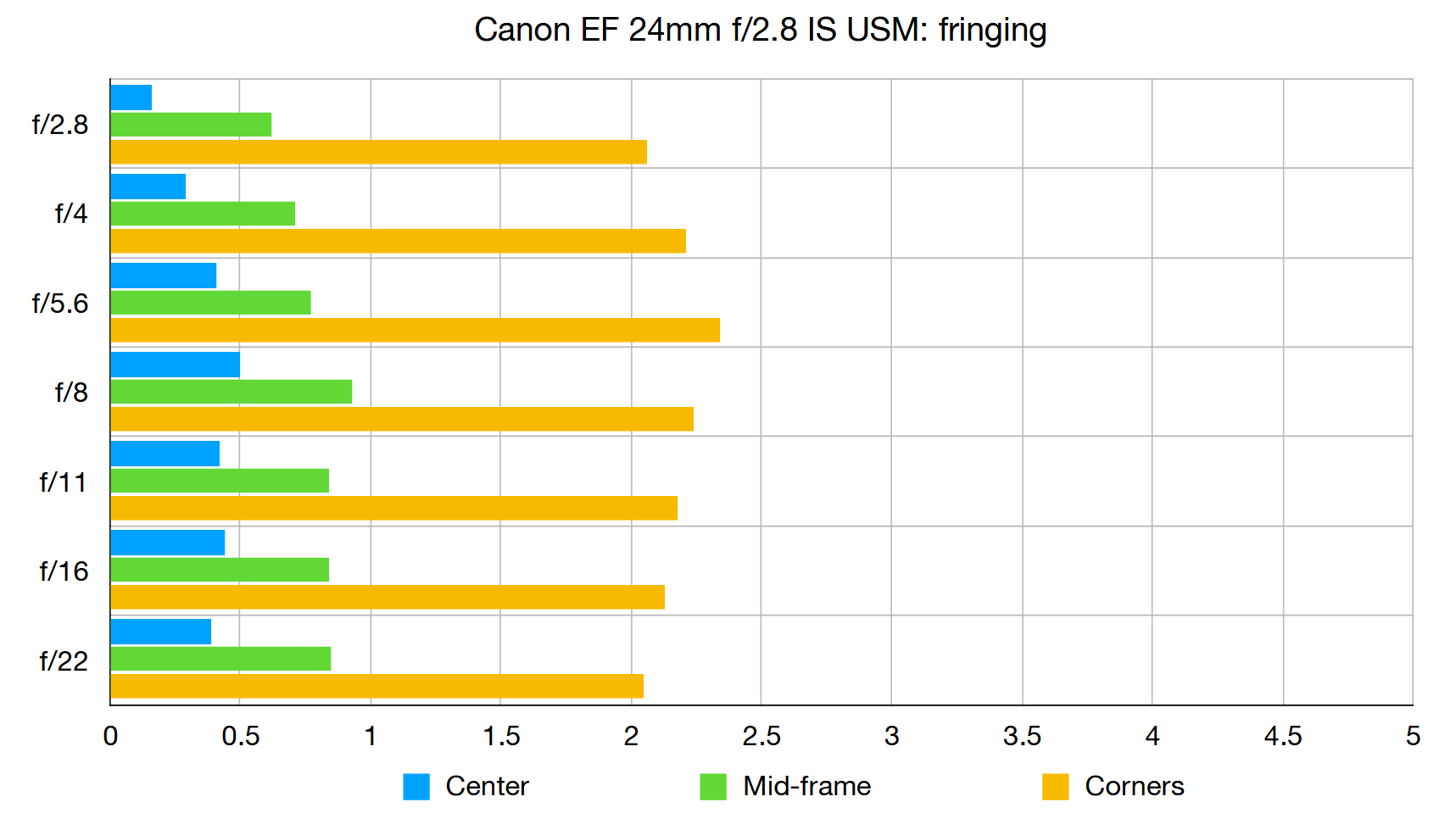
Color fringing can be a little noticeable when uncorrected, towards the edges and corners of the image frame when using a full-frame camera. The 1.6x crop factor of Canon’s APS-C format DSLRs cut off the edges anyway.
Distortion: -1.67
Barrel distortion is of a pretty low order for a 24mm lens and generally won’t need correction. It’s even less of an issue when using an APS-C format camera.
Verdict
There’s arguably not much to be gained by buying this lens if you already have a 24-70mm f/2.8 standard zoom lens. Even so, it makes a nice, compact and lightweight alternative for walkabout and street photography, with a lot to offer both full-frame and APS-C format DSLRs.
Read more:
Matthew Richards is a photographer and journalist who has spent years using and reviewing all manner of photo gear. He is Digital Camera World's principal lens reviewer – and has tested more primes and zooms than most people have had hot dinners!
His expertise with equipment doesn’t end there, though. He is also an encyclopedia when it comes to all manner of cameras, camera holsters and bags, flashguns, tripods and heads, printers, papers and inks, and just about anything imaging-related.
In an earlier life he was a broadcast engineer at the BBC, as well as a former editor of PC Guide.
